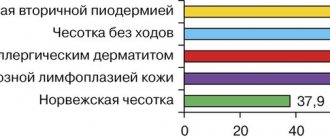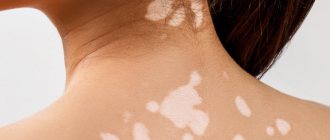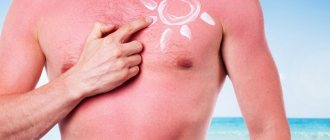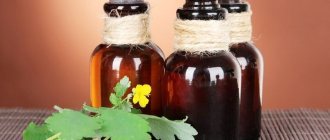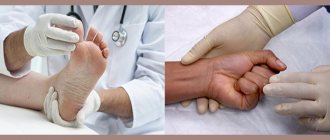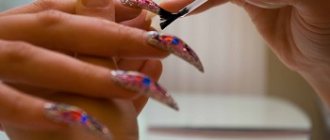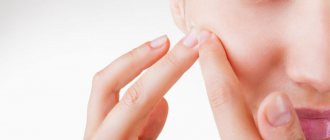In the classification of skin damage, a 2nd degree burn refers to the partially disrupted integrity of the epidermis under the influence of chemical or temperature exposure. The damage covers the epidermis and dermis, capillaries, horn cells and nerve endings. With such a lesion, the germ layer is not affected, which allows you to count on independent skin regeneration. The speed of recovery and the severity of the consequences depend on competent and timely provision of first aid for second-degree burns.
Associated symptoms
With a 2nd degree burn, hyperthermia, swelling, and redness of the affected area most often occur. Liquid bubbles may form. When the blisters break, sores form. They will take about 2 weeks to heal. The listed symptoms may include pain and increased sensitivity at the site of the lesion. If the area of damage is extensive, vomiting, weakness, dizziness, and fever may occur. Particularly severe symptoms of 2nd degree burns occur in children.
Severity of burn injury
The following types of burn injuries are classified according to severity::
- Light burn (1st degree). The clinical picture can include redness (hyperemia), slight swelling of soft tissues and pain. All symptoms go away quite quickly. Recovery takes an average of 5 days;
- Burn of moderate (second) severity. On the affected skin, in addition to hyperemia, single and small blisters are visualized, pain is pronounced, and swelling. Healing lasts up to 10 – 14 days;
- Severe burn (3rd degree). The lesions are deep, affecting muscle tissue. Symptoms: intense, unbearable pain, large blisters filled with dark liquid (mixed with blood);
- Extremely severe burn (4th degree). Soft tissues are affected, right down to the bones. Extensive wounds with ruptured blisters are visualized (blisters form, but immediately burst), severe swelling, severe pain, which can provoke shock.
Diagnostic measures
Before treating a 2nd degree burn, it is necessary to assess the extent and depth of tissue damage. You should definitely consult a doctor in the following situations:
- More than 5% of the skin surface is affected (in children - more than 2%).
- Localization - on the face or perineum, or the respiratory tract and esophagus are affected.
- The pain only gets worse over time.
- Swelling appears and foci of suppuration develop.
With a 2nd degree burn, bubbles with transparent contents usually appear. To determine the affected area, use the palm rule, the essence of which is that the area of the palm is counted as 1%. Based on this, they determine how much the affected area has spread and decide whether hospitalization is necessary. Even with a small degree of burn, but a significant area of damage, there is a risk of painful shock.
In what cases is puncture necessary?
The need for this procedure is related to the location of the blister on the human body. In some areas it can constantly interfere and limit movement. It is worth opening the bubble if it is located:
- on the soles of the feet;
- on the finger;
- in the area of the neck and collarbones;
- on the bends of the upper or lower extremities;
- on the shoulders and back.
If you get a burn in these places, you should puncture the blister. If this is not done, then it will constantly interfere, cling and be squeezed by clothing. Therefore, it is better to pierce it yourself under sterile conditions than to wait for it to burst due to constant pressure. After all, clothes, shoes and household items contain a large number of microorganisms and dirt, which greatly increases the risk of developing an infection.
Proper first aid
Further recovery depends on how competent first aid is provided for a 2nd degree burn. The procedure is as follows:
- Remove the source of damage.
- Rinse the damaged area under running cold water.
- Treat the skin with an alcohol-free antiseptic.
- Apply a sterile bandage.
- Give pain medication as needed.
But here is what you should absolutely not do in case of a 2nd degree burn:
- tear off clothing stuck to the wound;
- cool the burn with ice;
- bandage the wound tightly or use cotton wool in the dressing;
- Lubricate the damaged area with oil, sour cream or alcohol.
After providing first aid, you should consult a doctor. Only a specialist will determine how to treat a 2nd degree burn and give individual recommendations. As a rule, such lesions are treated at home. The exception is burns of the respiratory system and esophagus.
First steps when opening a bubble
If the integrity of the burn bladder is damaged, first aid will be required. It consists of disinfecting and treating the wound with antiseptics. At home, when a bubble breaks, you need to do the following:
- It is forbidden to remove skin from the wound yourself. It is this that acts as a barrier against the penetration of infectious microorganisms.
- It is necessary to treat the wound with an antiseptic: Chlorhexidine, Betadine, etc. You should not take alcohol tinctures, fatty creams and ointments for this. Apply a gauze bandage pre-soaked in Chlorhexidine to the burst blister.
- It is forbidden to use cotton wool - its fine fluff can get into the wound and cause suppuration.
- After all the manipulations done, you must visit a doctor who will prescribe the correct treatment.
- If pain occurs, it is permissible to use anesthetic sprays or ointments. They are freely available at any pharmacy.
Stages of treatment
The choice of therapy depends on the presence of concomitant diseases and the nature of the skin lesion. The standard approach involves solving specific problems at each stage of wound healing:
- Rejection of necrotic tissue. Treatment is carried out with an antiseptic and complex anti-inflammatory agents.
- Granulation. The blisters with liquid open, the inflammation gradually subsides, but the wound is open. At this stage, treatment with an antiseptic continues, dressings with wound-healing compounds are indicated.
- Epithelization. There is almost no pain, the wound is covered with fresh skin. Compositions are used that improve metabolism and stimulate regeneration.
It is not recommended to wet the wound until it has completely healed. Dressings are carried out according to schedule. The doctor monitors the situation in time to notice the worsening of the situation. Skin restoration lasts about 2 weeks.
When piercing is prohibited
Caution coupled with ignorance leads to difficulties. A person cannot decide whether or not to pierce a burn blister. Doubts are understandable, since the presence of blisters is a sign of severe skin damage. Self-medication in some cases will certainly lead to a worsening of the condition. It is prohibited to pierce swollen skin at home in the following cases:
- for injuries of 3 or 4 degrees;
- if the burn surface occupies more than 10% of the total body area;
- when the burn victim has diabetes;
- with many small bubbles gradually merging into one or several large foci;
- children or elderly people were injured;
- when blisters are localized on the face, in the groin area;
- for chemical or photochemical burns (acid, alkali, contact with hogweed, parsnip);
- if pus begins to accumulate in the bladder.
In these situations, self-medication is unacceptable, so there is only one way out - immediate contact with a surgeon. He must decide whether to pierce the burn site.
Treatment methods
A 2nd degree burn with an affected surface area of less than 10–15% responds well to treatment in an outpatient setting and at home. The success of treatment and rapid healing largely depends on how quickly and competently first aid was provided for second-degree burns.
Outpatient treatment is aimed at creating optimal conditions for wound healing, protecting the affected area from mechanical damage and infection, as well as stimulating regeneration processes.
First aid for a 2nd degree burn involves the following sequence of actions:
- remove the source of damage;
- Cool the burn area under running cold water for 10–15 minutes. This prevents the burn from spreading deep into the dermis;
- carefully clean the burn site using gentle antiseptics, such as hydrogen peroxide solution;
- cover the burn site with a sterile bandage;
- If necessary, give the victim pain relief, ensure rest and drink plenty of fluids.
Local treatment can be carried out using open and closed methods. The first is most often used when the lesion is localized on the face and groin area, so as not to impede physiological processes.
Treatment with a closed method involves the application of atraumatic dressings, for example a dressing with the Peruvian balsam "Branolind-N". For 2nd degree burns, usually a single application of a bandage is sufficient to begin the epithelization process.
Drug therapy involves the use of antihistamines, anti-inflammatory and antiseptic drugs. Antiseptics are used in the first days of treatment; they prevent secondary infection of the wound. Antihistamines eliminate itching and help relieve swelling. Only a doctor can prescribe any medications for you; do not select medications on your own, consult your doctor first!
With proper care, complete healing occurs within two to three weeks. Whenever processing a burned surface, you must pay attention to its condition. If the pain intensifies, the swelling does not subside, but rather increases, and pus is released, it is necessary to seek medical help as quickly as possible.
Mild burns do not require treatment with antibiotics, except in cases where the affected area occupies a large surface. Antibiotics can also only be prescribed by a doctor.
Possible complications
Complications can arise in case of improper treatment or delay in seeking medical help. Complications of burns with blisters :
- Attachment of a secondary infection . This often happens when blisters are opened and the rules of asepsis and antisepsis are not followed when treating and dressing the wound;
- Poor circulation at the burn site . With deep burns, extensive colloidal scars are formed that interfere with normal blood flow in the surrounding tissues. In severe cases, this leads to necrosis;
- Sepsis is a general infection of the body. The infection spreads through the bloodstream throughout the body, causing polished failure (severe nonspecific stress reaction of the body);
- Impaired functioning of organs . This often occurs with burns to the eyes, respiratory tract, mouth, esophagus and stomach. In this case, the person may become disabled.
Features of home therapy
After providing first aid for a 2nd degree burn, it is necessary to take a responsible approach to completing the course of treatment prescribed by the doctor. Rules that are recommended to be followed:
- eliminate heavy physical labor, since excessive stress provokes inflammatory processes in the body;
- avoid working in dusty and dirty objects to avoid infection of an open wound;
- Monitor the sterility of the dressings and follow the schedule for their replacement.
New tissues regenerate quickly if there are no complications due to external irritants. Recovery will take about 2 weeks, but may take up to 3 weeks for some. Healing slows down in older patients with chronic diseases. With successful therapy, recovery occurs without scars or scars.
Healing time
So is it possible to pierce a burn blister?
It takes about two weeks for the symptoms of the lesion to fully recover. The neoplasm is destroyed on its own after two days due to constant exposure to surrounding objects and changes in skin turgor. Due to these factors, fluid is released. Treating a burn with a blister does not take much time.
Typically, burns accompanied by blisters heal in several stages:
- Purulent-necrotic. The bubble is actively growing and filling with liquid contents. The surrounding skin changes color to a redder color. The contents of the blister become light brown. Pus also forms;
- Granulation. At this stage, the bubble breaks out and the epidermis gradually begins to recover;
- Epithelization. Damaged skin is completely restored;
Prevention measures
Preventing burns involves careful handling of chemicals, household electrical and heating appliances. If we are talking about a child, he needs to be protected from danger - potentially unsafe objects and liquids should be kept away. If an injury occurs, you must immediately provide assistance and, if necessary, call a doctor.
Prevention of complications is careful adherence to the doctor’s recommendations during the treatment process, timely wound care, and the use of sterile materials. It is better to use specialized ointment dressings that accelerate healing and do not stick to the wound surface. You should also limit mechanical and physical irritation of the injured area, maintain hygiene, establish a drinking regime and eat a balanced diet, and the body will do the rest itself.
How to prevent
Most cases of childhood burns are the responsibility of parents and other adults who leave children unattended in potentially dangerous places. Therefore, when a child appears in the house, all family members must follow the following rules.
- Do not drink or eat hot food while the baby is in your arms.
- Cook food only on the far burners.
- Keep potentially dangerous objects as far away from the edge of the table as possible.
- When preparing a bath, turn on cold water first, and then hot, thoroughly mixing the layers. Remember that water at a temperature of +50 ℃ can be dangerous for a child!
- For sunbathing, use only early morning hours and use sunscreen.
- If possible, do not use extension cords; try to secure electrical wires and cords so that the child does not grab them if he falls.
- Keep electrical appliances as far as possible from children and water sources.
- Hide candles and matches.
- Keep household cleaning products and other chemicals out of the reach of children.

